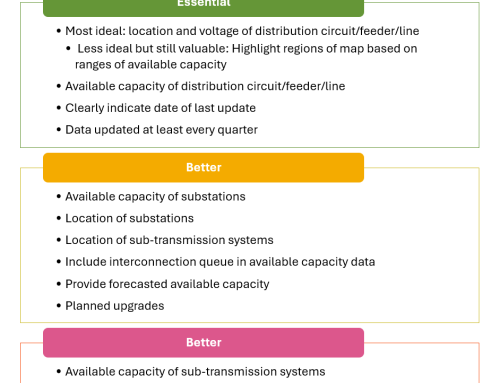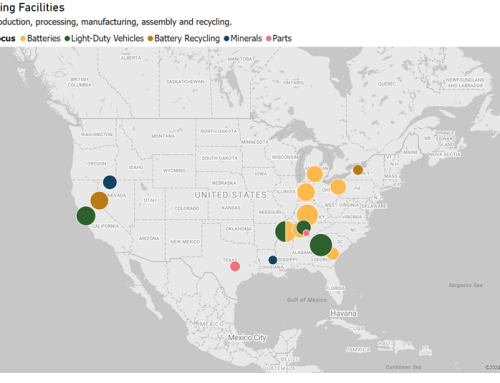
Today, we released a first-of-its-kind report examining state approaches in implementing Justice40 through the National Electric Vehicle Infrastructure (NEVI) program. In partnership with Evergreen Collaborative, EVHybridNoire and GreenLatinos, my colleague Tom Taylor and I examined racial and economic equity during the first round of NEVI through two different lenses: a public engagement analysis and a plan analysis.
Through a series of interviews and a comprehensive review of initial state NEVI plans, this new analysis identifies how states approached equity through initial NEVI planning and provides recommendations for states to consider throughout the remainder of the five-year program.
The first part of the research – the public engagement analysis – focuses on learnings from a series of interviews with organizations who engaged with their state Department of Transportation to inform the state’s NEVI plan. The goals of the interviews were to understand how and to what extent community members were engaged, study how equity was incorporated into the state’s engagement approaches, identify barriers to engagement from people living in disadvantaged communities (DACs), and determine best practices that can be replicated for future engagement opportunities.
The next section of the report is a plan analysis. Through a selection of three to four states per National Association of State Energy Office regions (to ensure regional diversity), for a total of 20 states, we looked at how states discussed equity in their initial NEVI plans through a set of peer-reviewed equity indicators. The equity indicators were developed through literature reviews, conversations with organizations involved in states’ plan development, and strategic input from partners. The equity indicators include the methods a state identified DACs in their plan, the benefits a state identified for DACs, the ways the state engaged DACs, and more. For instance, of the 20 states analyzed, 16 states relied on the EV Charging Justice40 map to identify DACs, and half of those states coupled the Justice40 map with their own state-specific equity mapping tool.
This new analysis identifies several strategies for states to both improve public engagement and maximize benefits to disadvantaged communities, including:
-
Expand engagement approaches that are designed to specifically reach disadvantaged communities, including widening reach on social media, email lists, local media, and meetings including communities of color and tribal communities.
-
Guarantee that educational materials are appropriately distributed to communities and ensure that they reflect local community needs and cultural contexts.
-
Ensure Justice40 benefits are defined alongside community members and ensure there are ongoing opportunities for feedback as NEVI is implemented throughout the program. Additionally, agencies should identify potential burdens and develop mitigation plans.
-
Build agency capacity for subsequent NEVI plans, train staff to lead equitable engagement, leverage additional federal funds, and proactively involve community-based organizations.
-
Conduct a fully public and documented engagement process to provide transparency into the process, build community trust, and ensure there are no gaps in representation.
-
Broaden the equity lens with complementary and comprehensive policies. For example, state incentive programs for zero-emissions transportation can help focus additional resources in and around disadvantaged communities.
Read the full report here. Have any questions about the findings? Let me know by responding to this email.


